Mad Men, The Newsroom & The Power of Nostalgia

“Nostalgia – it’s delicate, but potent…It’s a twinge in your heart far more powerful than memory alone…it takes us to a place where we ache to go again…to a place where we know are loved.”
– Mad Men
It may be simply a part of a Kodak advertising pitch, but Don Draper understands nostalgia inherently, and as an extension of that, so does Matthew Weiner, creator and writer of AMC’s 1960s period advertising drama Mad Men. Another writer reaching similar levels of acclaim, Aaron Sorkin of The Newsroom wields nostalgia like a weapon, using it to shape and bend the emotions of his audience.
Nostalgia is defined as “a wistful…yearning for return to some past period” (Merriam-Webster). Weiner’s Mad Men is unquestionably a vehicle for nostalgia: viewers are treated to authentic costuming, music, sets and vehicles – amongst a myriad of other devices. However the television series’ portrayal of the period can sometimes be problematic – its depiction of events, cultural trends and people can often glamorize 1960s America. But Weiner uses these portrayals to make a statement, shift attitudes and explore themes to ensure that Mad Men is not simply nostalgic.
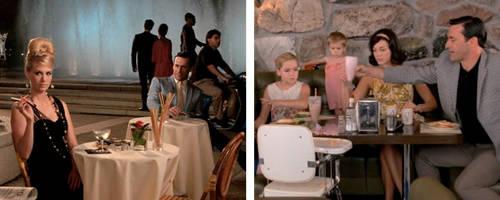
Scholar Marc LaSueur identifies one form of nostalgia as surface realism, using material objects to help garner nostalgia from an audience. Weiner and the crew on Mad Men have a serious attention for detail, from the period costumes of Betty Francis and Joan Harris, to vehicles such as Don’s Cadillac – all a mixture of authentic and purpose-made items. The soundtrack utilises period music in both diegetic and non-diegetic roles, and often to strengthen the narrative, giving Don a movie star appeal as he steps out of the New York Athletic Club to The Rolling Stones “Satisfaction” (‘The Summer Man’, 2010) or The Kinks’ “You Really Got Me” empowering Peggy after she quits her job (‘The Other Woman’, 2012). But Mad Men isn’t simply using costumes, set design or music as nostalgic signposts – they can be used to give meaning to Weiner’s narrative, which at times is extremely subtle. A strong example of this is the use of Nancy Sinatra’s “You Only Live Twice” as Don leaves his wife Megan Draper at work to head to a bar (‘The Phantom’, 2012). The lyrics recall “one life for yourself and one for your dreams” – any viewer who has followed Don’s story thus far understands the parallel between the song and his many identities. “Are you alone?” he is asked when he reaches the bar. Regardless of how crowded the room, Don is always alone. It is in a manner such as this the Weiner has used many nostalgic elements that could simply deemed surface realism, to enhance and strengthen narrative elements and so Mad Men extends beyond nostalgia.
Weiner doesn’t always successfully use or develop nostalgia in such positive ways – one of the most iconic events of the 1960s is represented in perhaps the most problematic portrayal of all Mad Men’s episodes: Martin Luther King’s assassination (‘The Flood’, 2013). The episode almost solely focuses on how its characters react to such a deep tragedy – or rather how the predominantly Caucasian cast deals with the tragedy. Having introduced Don’s secretary Dawn, the series’ first African-American as a minor character during season five, it is understandable, in fact necessary, that the story focus on how the long-time Caucasian lead characters confront the situation. To focus on Dawn now would only seem trite and insincere, as television critic Matt Zoller Seitz describes how clichéd it would be to “suddenly tak[e] this very white show and mak[e] it about the only significant black character”.

However, therein lies the problem with the cultural portrayal of the episode – how accurate is this depiction, and how is it romanticising the nostalgic stylisation of the event? The widespread rioting that occurred following the assassination is described, but never seen, nor is Dawn’s home life or her community. Zoller Seitz acknowledges that Weiner has never engaged with issues of race as confidently as other cultural issues such as feminism and anti-Semitism, and believes Weiner to be self-aware: “he’s afraid of doing it badly…and this fear has come through in the show”. Only episodes later, the Draper residence is subject to a robbery, where the African American woman who robs the home is given more lines than most black characters in the series, second only to Dawn (‘The Crash’, 2013). The argument can be made that African Americans appearing in servitude roles are an accurate portrayal Though Mad Men employs few ethnic minorities in the narrative, there are constant reminders of the prejudicial injustice of the central characters, and their out-dated bigotry is never presented in a positive light. Thus the series is using nostalgia of past cultural attitudes as a social commentary on contemporary America.
Aaron Sorkin’s The Newsroom is perhaps one of the most interesting programs on television. Full disclosure: it is so far from one of my favourite programs, I watch it more out of curiosity and admiration for the boldness of Sorkin’s storytelling. I think Sorkin almost always writes from the top of his soapbox, which leads to many problems with his narratives, in addition to his characters often being clichéd and the relationship stories bordering on melodramatic soap opera.
Sorkin is able to write reflectively, with the aid of hindsight to manipulate real events after the fact. Similar to Mad Men, it provides the audience with nostalgia, though in the case of The Newsroom it is more immediate and accessible to all of the audience, rather than only those present in the distant 1960s. I certainly don’t have any fond recollections of the 1960s; at best the majority of Mad Men’s audience remember it as children. However, The Newsroom has the advantage that anyone who is old enough to watch the series is also old enough to recollect the events taking place in real time. At times, it works terrifically, and appears impressive, fun and thrilling – for instance the coverage in the pilot of the BP Gulf of Mexico oil spill or the death of Osama Bin Laden.
However, this power was abused multiple times throughout the first season, particularly in the fourth episode for the coverage of Gabrielle Giffords and the 2011 Tucson shooting. Sorkin manipulated the news to make his characters appear as heroes, they held off from falsely reporting Giffords death unlike Fox and MSNBC, allowing Don the ‘valiant’ declaration, “it’s a person, a doctor pronounces her dead, not the news”. It’s lazy storytelling, which provides an easy way to make your characters look like heroes. It raises questions of ethical storytelling, and how Sorkin approaches these issues. (Also, throwing in a Coldplay song in post is another cheap ploy for tears, more at the speed of Grey’s Anatomy than a HBO drama.)

The problem is that Sorkin nearly always makes his characters come out on top. The power of hindsight allows him to turn his characters into superheroes, as they nearly always make the right move. Sorkin can literally play God, as he has the history book sitting in front of him, before he decides each character’s next move. It makes The Newsroom’s portrayal of history problematic, in a similar nature to Mad Men. There are decisions to be made by Weiner and Sorkin regarding the manipulation of nostalgia. Sorkin chose to use the death of Osama Bin Laden to craft his characters into heroes of that iconic night, which is one of the most patriotism-inspiring events in U.S history. It’s an easy tactic to make your audience support your characters – I would almost say a crutch to lean on, in case your own story isn’t strong enough. Regardless, the second season will undoubtedly uncover and handle several further issues whilst covering the news stories of 2011-2012, and I can’t wait to see how The Newsroom develops. It’s not perfect, but there is some gold here.
Nostalgia is an interesting implement in the toolbox of screenwriters. It instantly is able to draw emotion from the audience, without failure. Thus, a writer must use it sparingly, and there is an ethical responsibility required in its use. It’s a fantastic tool, and I encourage it to be used, but it should never be used just for the sake of it. I admire both Weiner and Sorkin, and I think they have written terrific scripts. Just food for thought, I guess.
What do you think? Leave a comment.

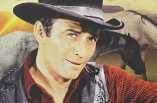
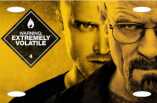



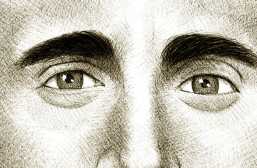

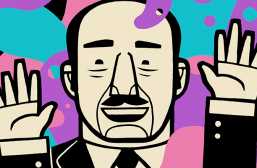

The nostalgia monologue by Don was one of my favorite scenes on the screen this year, thank you for making me relive it. This is a very delightful read.
Great article! I thought the Kate winslet in Mildred pierce perfectly captured this feeling as well!
Thanks for the tip, I have been meaning to watch Mildred Pierce for a while, I will have to run out and get the DVDs
Agree with Alex, Kate captured it very well as Mildred Pierce (which is a great mini-series if I may add). I think both Mad Men and The Newsroom are in a class of their own, with Newsroom slowly but steadily finding its way.
Really nice article! I read something in the NYTimes about nostalgia being classified as a disease until the mid20th century. Bizarre. I would be quite, quite insane then. Great read!
I don’t believe that Mad Men can be as good on race as it is on gender until there are a lot more black characters. Part of the reason MM’s treatment of gender is so compelling is that it actually features detailed portraits of the interior lives of SEVERAL women, instead of using just one or two as stand-ins for ‘see we know what it’s like to be a woman!’ Until they do the same with people of color it will always be a frustrating, unsatisfying attempt dominated by stereotypes…
Nice post man!
Interesting post! I think you could write a whole article just about the music in Mad Men, that part of your post was great.
This is a great article; I have recently written on similar themes as nostalgia is appearing more and more prominently. A lot of things tend to romanticize the past. Interesting comparison with The Newsroom.
I see the way nostalgia is discussed regarding Mad Men but not for The Newroom. I think that because Mad Men is set in a previous era then nostalgia, often as images of that time, comes across. In the case of The Newsroom, some infrequent reflection on the past is maybe not the same because there is no image to go with it. Seeing lots of smoking in Mad Men, the dress, are different than just some reflection on a different time.
Mad Men appears to be a great example of Jameson’s “nostalgia film,” as described in “Postmodernism, Or, the Cultural Logic of Late Capitalism”: the show isn’t “some old fashioned ‘representation’ of historical content, but instead approached the ‘past’ through stylistic connotation, conveying ‘pastness’ by the glossy qualities of the image” (19). By using the past for his own ends, Weinder moves the show beyond representation. It’s more like a damaged copy of a copy that resembles the original past but is nearly so unlike the original past as to be misidentified.